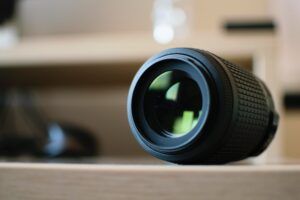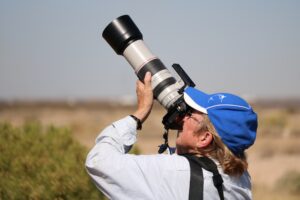Capturing the Moon’s stunning beauty is a dream for many photographers. The best lens for Moon photography is one that’s long, sharp, reasonably fast, stabilized, and not too heavy.
In this guide, we’ll explore the factors to consider when choosing a lens for taking breathtaking Moon photos.
From understanding the ideal focal lengths and apertures to choosing between different brands, we’ll cover it all.
You’ll even find answers to popular questions like “Is a 70-300mm lens good for moon photography?” or “What is the best aperture for moon photography?”
Ready to dive in? Let’s get started.
| Quick Facts | |
|---|---|
| Best Overall Lens Type for Moon Photography | Long, Sharp, and Fast |
| Ideal Focal Length | Over 200mm |
| Aperture Range | f/5.6 – f/11 |
| Popular Brands for Moon Lenses | Nikon, Canon, Sony, Fujifilm |
| Don’t Forget | Practice, Planning, and Composition |
How to Choose the Best Moon Photography Lens
Selecting the right lens for Moon photography is crucial for capturing that perfect shot. But with so many lens options available, it’s easy to get lost in the jargon and numbers.
Don’t worry; we’re here to guide you through the maze.
In this section, you’ll learn what to look for in a lens to capture the Moon’s beauty effectively.
Focal Length: The Longer, The Better
When it comes to Moon photography, focal length is king.
The focal length dictates how “zoomed in” your subject will appear in the frame. For capturing detailed moon shots, you’ll ideally want a lens with a focal length of over 200mm.
- Short to Medium Focal Lengths (35-200mm): Good for capturing the Moon along with some landscape elements.
- Long Focal Lengths (Over 200mm): Excellent for detailed Moon shots, showing craters and other features.
Aperture: Balance is Key
Your lens’s aperture controls how much light enters the camera.
In Moon photography, you’ll often be shooting in low light conditions, so a lens with a faster aperture (lower f-number like f/2.8) can be beneficial.
However, too wide an aperture might overexpose the Moon. An aperture range of f/5.6 to f/11 is generally good for Moon photography.
Image Stabilization: A Handy Feature
While not a must-have, image stabilization can help in reducing camera shake, especially if you’re shooting handheld.
However, for the clearest Moon shots, a tripod is highly recommended.
Weight and Portability: Don’t Break Your Back
Remember, the best lens is the one you’ll actually use.
Super-telephoto lenses might offer fantastic zoom, but they can also be heavy and cumbersome.
If you’re hiking to a remote location for that perfect Moon shot, consider the lens’s weight and portability.
| Feature | Importance for Moon Photography | Ideal Specifications |
|---|---|---|
| Focal Length | High | Over 200mm |
| Aperture | Medium | f/5.6 – f/11 |
| Stabilization | Low (but helpful) | Optional |
| Weight | Medium | Manageable for your needs |
“The lens makes the picture, not the camera. Spend time understanding your lens options to make the most of your Moon photography.”
By considering these factors, you’ll be well on your way to choosing the best lens for your Moon photography adventures.
However, while the lens is crucial, other factors like how to store camera lenses properly and understanding how do camera lenses work are equally important for your photography journey.
Your Lens Choice Depends on the Moon Picture You Want to Capture
When it comes to capturing the perfect Moon picture, one size doesn’t fit all.
The lens you choose will dramatically affect the size and perspective of the Moon in your photographs.
Whether you want the Moon to be the star of the show or just a celestial cameo, your lens choice plays a pivotal role.
Perspective and Shooting Location
The shooting location and perspective you desire can affect your lens choice.
For instance, if you’re capturing the Moon over a city skyline, a medium focal length like 70-200mm might be ideal.
This allows you to include some earthly elements for scale and context.
- Urban Setting: A lens with a focal length of 70-200mm can help capture both the Moon and elements like buildings or trees.
- Rural Setting: In less cluttered landscapes, you might opt for a longer focal length to make the Moon more prominent.
Focal Length and Moon Size
Focal length directly influences how big the Moon appears in your frame.
- Wide-Angle Lens (10-35mm): The Moon will appear small and can act as a secondary element in a landscape shot. Useful for photos where the Moon complements a larger scene.
- Intermediate Focal Lengths (35-200mm): These lenses offer a balance, making the Moon more noticeable while still allowing for some landscape elements.
- Long Focal Lengths (over 200mm): These are your go-to lenses for close-ups of the Moon, showcasing its craters and details.
| Setting | Ideal Focal Length | Moon Size in Frame |
|---|---|---|
| Urban | 70-200mm | Medium |
| Rural | Over 200mm | Large |
| As a Secondary Element | 10-35mm | Small |
Expert Tip: To make the Moon appear larger in your frame, you can also experiment with camera settings and post-processing techniques. For instance, using a longer exposure can sometimes add a sense of scale and grandeur to your Moon photos.
In essence, think about the kind of Moon picture you want to capture and choose your lens accordingly.

Moon Photography with a Wide Angle Lens
When it comes to Moon photography with a wide angle lens, the Moon isn’t usually the star of the show, but rather a compelling secondary subject.
Wide-angle lenses, which typically have a focal length between 10-35mm, are great for capturing expansive landscapes or cityscapes.
In such photos, the Moon can add an extra layer of beauty and interest.
Why Use a Wide-Angle Lens?
- Expansive Field of View: Capture more of the surrounding landscape along with the Moon.
- Creative Composition: The wide field of view allows for more creative compositions, incorporating elements like trees, buildings, or water reflections.
- Portability: Wide-angle lenses are generally lighter and more compact than telephoto lenses, making them convenient for on-the-go photography.
Limitations
While wide-angle lenses are versatile, they come with some limitations in the context of Moon photography.
- Smaller Moon: Because of the wide field of view, the Moon will appear smaller in your frame.
- Distortion: These lenses can sometimes distort the edges of the frame, which might not be ideal for all compositions.
| Pros | Cons |
|---|---|
| Expansive Field of View | Smaller Moon |
| Creative Composition | Potential for Distortion |
| Portability | Limited Detail |
Note: If you’re shooting with a wide-angle lens, consider the rule of thirds to place the Moon strategically in your frame for a balanced composition.
Tips for Wide-Angle Moon Photography
- Plan Your Shot: Use apps to predict the Moon’s position so you can plan your landscape elements accordingly.
- Use a Tripod: Even a slight camera shake can ruin a good shot. Stabilize your camera, especially in low-light conditions.
- Experiment with Settings: Try different aperture and shutter speed settings to capture both the landscape and the Moon adequately.
If you’re new to lens terminology and want to understand more about focal lengths and their implications, our what do camera lens numbers mean article can help you out.
Moon Photography with Intermediate Focal Lengths
When you’re aiming for Moon photography with intermediate focal lengths, you’re entering a versatile zone.
These lenses, which typically range from 35-200mm, offer a balance between landscape inclusion and Moon prominence.
This range is excellent for those who want the Moon to be a significant element in the photo but not necessarily the only focus.
Advantages
- Depth and Scale: These lenses allow you to add depth to your photos by capturing foreground elements like trees or buildings, giving a sense of scale to the Moon.
- Flexibility: Intermediate focal lengths are versatile, suitable for various photography styles, including portraits, landscapes, and, of course, lunar shots.
- Weight: Generally lighter than super-telephoto lenses, making them more portable for those long hikes to your favorite shooting spot.
Tips for Intermediate Focal Length Moon Photography
- Frame the Moon: Use elements in the landscape to frame the Moon, adding context and artistic flair to your shots.
- Aperture Settings: An aperture setting around f/8 to f/11 usually works well to keep both the Moon and foreground elements in focus.
Pro Tip: Experiment with the depth of field to either isolate the Moon from the foreground or to keep everything in sharp focus.
If you’re just starting and trying to decide between upgrading your lens or camera body, our article on should I upgrade my camera body or lens can give you some pointers.
Moon Photography with Long Focal Lengths
For those looking to capture the Moon in all its detailed glory, Moon photography with long focal lengths is the way to go.
Super-telephoto lenses, usually over 200mm, let you zoom in close to reveal the Moon’s craters, seas, and other features.
Why Use Super-Telephoto Lenses?
- Detail: The high focal length allows for an extraordinary level of detail, making every crater and sea on the Moon’s surface visible.
- Isolation: These lenses can isolate the Moon, making it the sole focus of your photograph.
Limitations and Considerations
- Weight: Super-telephoto lenses are heavy. They’re not the best for long treks or handheld shooting.
- Limited Landscape: With the focus primarily on the Moon, you won’t capture much, if any, of the surrounding landscape.
| Pros | Cons |
|---|---|
| High Detail | Heavy |
| Subject Isolation | Limited Landscape View |
Note: If you’re using such a long lens, a sturdy tripod is almost mandatory to avoid camera shake.
Tips for Long Focal Length Moon Photography
- Use a Tripod: To capture crisp details, stabilize your camera with a reliable tripod.
- Manual Focus: Autofocus might struggle at such long distances, so manual focus is recommended.
- Plan Your Shot: Given the limited landscape view, ensure the Moon is in an optimal position in the sky for your shot.
If you’re keen to know more about the quality aspects of lenses, our guide on how to check camera lens quality could be a useful read.
How Fast Should Your Moon Photography Lens Be?
In photography, “fast” isn’t about speed; it’s about light!
When we talk about the speed or “fastness” of a Moon photography lens, we’re really talking about its aperture.
The aperture is the opening in the lens that allows light to hit your camera’s sensor. It’s a crucial factor in low-light conditions, and yes, night photography with a celestial body qualifies as low light!
Why Does Aperture Matter?
- Low-Light Performance: A fast lens with a wide aperture (low f-number like f/2.8) can capture more light, which is essential for night photography.
- Depth of Field: A wide aperture also provides a shallow depth of field, allowing you to isolate the Moon from its surroundings if that’s the effect you’re going for.
- Image Quality: A good aperture range gives you the flexibility to adjust settings for optimal image quality.
| Aperture Range | Advantages | Disadvantages |
|---|---|---|
| Wide (f/2.8 – f/4) | Better low-light performance, shallow depth of field | Potential for overexposure of the Moon |
| Narrow (f/8 – f/11) | More elements in focus, less chance of overexposure | Requires longer exposure times |
Expert Insight: “A fast lens is useful, but not mandatory for Moon photography. Sometimes, a narrow aperture is better for capturing the Moon’s details.”
Tips for Choosing Aperture in Moon Photography
- Start with a Mid-Range Aperture: If you’re not sure where to begin, try an aperture setting around f/8. This setting offers a good balance between light and detail.
- Experiment: Don’t be afraid to adjust the aperture during your shoot to see how it impacts your photos.
- Check Your Shots: Always review your shots after adjusting the aperture to ensure the Moon isn’t overexposed or underexposed.
So, while a fast lens can be a great asset in Moon photography, it’s not the only factor to consider. Understanding how to manipulate the aperture can significantly impact the quality of your lunar shots.

Best Lenses for Moon Photography by Brand
Choosing the right lens for your camera brand is crucial for achieving your desired results in Moon photography.
Based on expert reviews, user testimonials, and technical specifications, here are the top picks for each camera brand:
Best Nikon Lens for Moon Photography
For Nikon users, the Nikon NIKKOR Z 100-400mm f/4.5-5.6 VR S is the lens to aim for.
This lens is a super-telephoto wonder that combines exceptional sharpness, contrast, and color accuracy, enabling you to capture the Moon’s intricate details with pinpoint precision.
It’s also relatively lightweight, offering a balanced choice for handheld and tripod shooting.
Key Features:
- Super-telephoto range
- Exceptional sharpness and contrast
- Built-in Vibration Reduction (VR) for image stabilization
- Relatively lightweight for its class
Best Sony Lens for Moon Photography
The Sony FE 100-400mm f/4.5-5.6 stands out as a top-quality telephoto lens, offering breathtaking sharpness, contrast, and color accuracy.
Its compatibility with a wide range of Sony camera bodies adds versatility, making it a go-to lens for many photographers.
Key Features:
- Excellent sharpness and contrast
- Wide compatibility with Sony camera bodies
- Telephoto range suitable for Moon photography
Best Canon Lens for Moon Photography
Canon users will find a true ally in the Canon EF 100-400mm f/4.5-5.6L IS II.
This telephoto zoom lens is specifically engineered for capturing celestial objects, like the Moon, in crisp detail. It also has a pleasant bokeh effect that adds an artistic touch to your shots.
Key Features:
- Telephoto zoom range
- Excellent performance in night sky photography
- Sharpness and contrast
- Pleasant bokeh
Best Fujifilm Lens for Moon Photography
For Fujifilm enthusiasts, the Fujifilm XF100-400mmF4.5-5.6 is the lens of choice.
This telephoto zoom lens offers top-notch performance, capturing the Moon with great detail, albeit at the cost of being a bit heavy.
Key Features:
- High-quality Moon shots
- Telephoto zoom range
- Heavyweight build for stability
Best Cheap Lens for Moon Photography
Budget-conscious photographers should consider the Tamron SP 150-600mm F/5-6.3.
It offers excellent image quality at a pocket-friendly price, making it versatile for other types of photography like wildlife and sports as well.
Key Features:
- Budget-friendly
- Excellent image quality
- Versatile for other photography types like wildlife and sports
| Brand | Recommended Lens | Unique Feature | Consideration |
|---|---|---|---|
| Nikon | NIKKOR Z 100-400mm f/4.5-5.6 VR S | Vibration Reduction (VR) | Relatively lightweight |
| Sony | FE 100-400mm f/4.5-5.6 | Excellent sharpness | High price |
| Canon | EF 100-400mm f/4.5-5.6L IS II | Night sky performance | High price |
| Fujifilm | XF100-400mmF4.5-5.6 | High-quality Moon shots | Heavyweight |
| Budget | Tamron SP 150-600mm F/5-6.3 | Budget-friendly | Slightly less sharp |
For more insights into lens selection, our article on what camera lens do I need can offer some helpful tips.
Cure Yourself of GAS (Gear Acquisition Syndrome)
It’s easy to get caught up in the whirlwind of new lenses, camera bodies, and other fancy equipment.
While good gear can make a difference, remember that it’s not the only key to success.
The acronym GAS stands for Gear Acquisition Syndrome, a term used to describe the urge to acquire all the latest gadgets in hopes that they will improve your photography.
But the cure for GAS in Moon photography is to focus more on the basics:
- Practice: No lens can compensate for lack of experience. The more you shoot, the better you’ll get.
- Planning: Know the Moon’s phases and best viewing times. There’s a lot you can do with a basic setup if you’re in the right place at the right time.
- Composition: Learning how to compose your shots effectively is just as important as having a high-quality lens.
- Settings: Understanding settings like ISO, aperture, and shutter speed can make a world of difference in your Moon shots.
Tip: Before you rush off to buy that new lens, take some time to master what you already have. You’ll be surprised at how much you can achieve with a little know-how.
For a more detailed look at the basics, our article on how to make the most of your kit lens can be a great starting point.
FAQs
Can a 70-300mm Lens Be Used for Moon Photography?
Yes, a 70-300mm lens is a good choice for capturing the moon. Its telephoto range allows you to get closer shots, providing decent detail and sharpness.
Is Capturing the Moon with a 50mm Lens Possible?
You can take a picture of the moon with a 50mm lens, but the moon will appear quite small in the frame. This lens is better suited for wide landscape shots that include the moon as a secondary element.
How to Photograph the Moon Using a 300mm Lens?
A 300mm lens can be great for moon photography. Use a tripod for stability, set your camera to manual mode, and start with settings like f/11, 1/125s shutter speed, and ISO 100. Adjust as needed.
When is a 50mm Lens Not Ideal?
A 50mm lens is not ideal for capturing detailed shots of the moon. It’s better suited for portraits, street photography, and general-purpose shooting.
What’s the Purpose of a 75-300mm Lens?
A 75-300mm lens is versatile and can be used for various types of photography, including wildlife, sports, and moon photography. Its telephoto range allows for capturing distant subjects.
How to Configure a DSLR for Moon Shots?
To set up a DSLR for moon photography, use manual mode and start with settings like f/11, 1/125s shutter speed, and ISO 100. Use a tripod and adjust settings as necessary.
How Do Photographers Make the Moon Appear Larger?
Photographers often use telephoto lenses and creative composition to make the moon appear larger in photos. Some also use editing software for post-processing effects.
What Does the Lunar 11 Rule Mean?
The “lunar 11” rule is a guideline for moon photography settings. It suggests using an aperture of f/11 and adjusting the shutter speed and ISO settings to get the correct exposure.
Why Can’t My Camera Auto-Focus on the Moon?
Auto-focus may struggle with the moon due to low light and the lack of contrast. Switch to manual focus and use your camera’s live view feature to focus accurately.
Conclusion
In wrapping up this comprehensive guide on Moon photography lenses, it’s important to reiterate that while the lens is a significant factor, it’s not the only one.
The key to capturing that perfect Moon photo also lies in practice, planning, composition, and understanding camera settings.
Whether you’re shooting with a high-end lens or a budget-friendly alternative, remember that skill and knowledge are equally important. So, step out, aim for the Moon, and shoot for the stars!


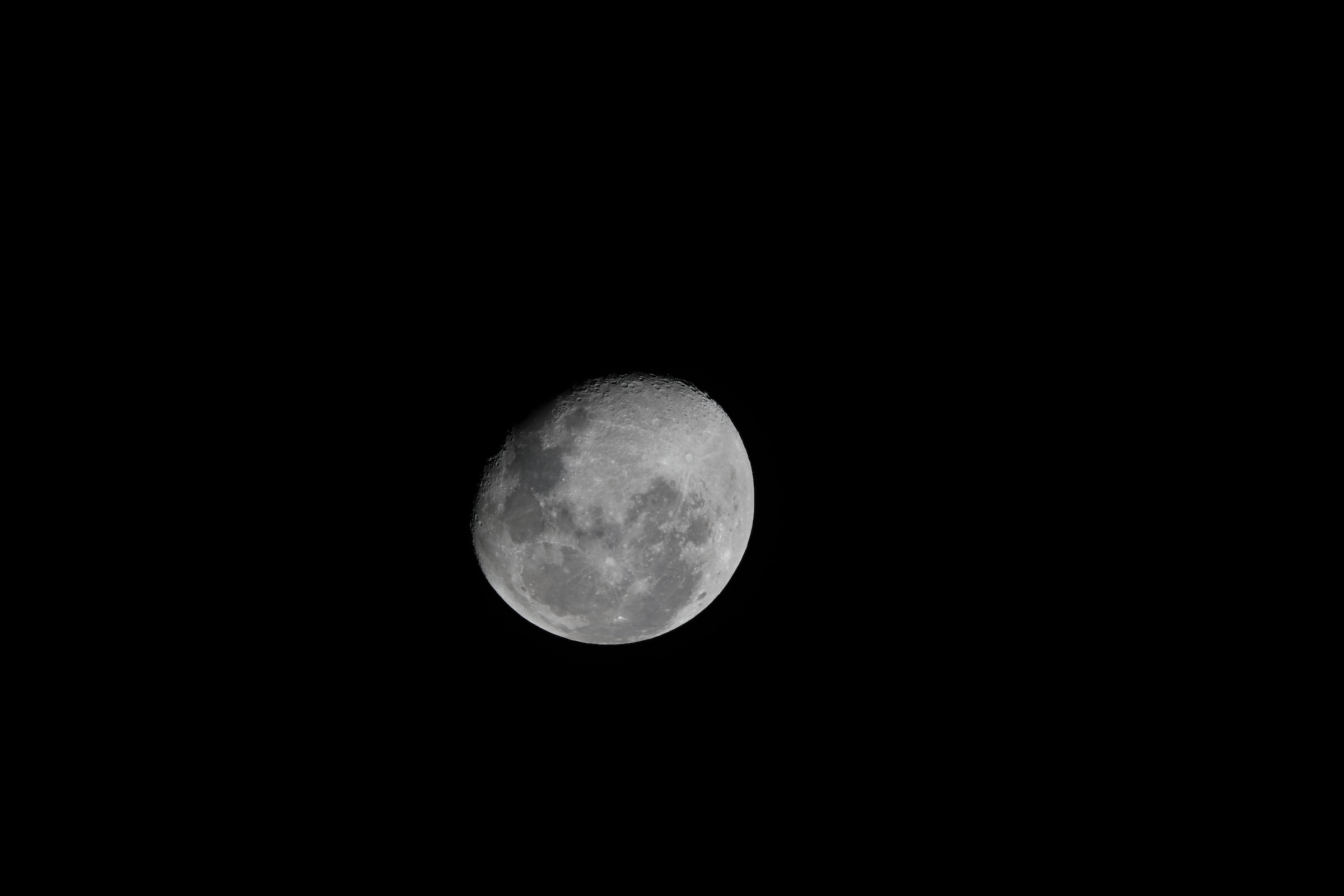
![Read more about the article The Best Camera Lens for Sports Photography [2023]](https://photographyexplorer.com/wp-content/uploads/2023/09/best-camera-lens-for-sports-photography-300x240.jpg)
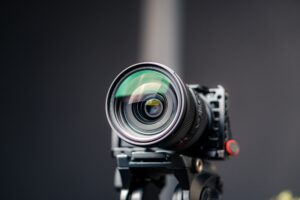
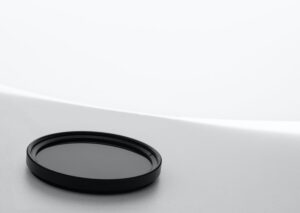
![Read more about the article Best Lens for Urban Photography: Top Picks for Capturing City Life [2023]](https://photographyexplorer.com/wp-content/uploads/2023/10/best-lens-for-urban-photography-300x200.jpg)
